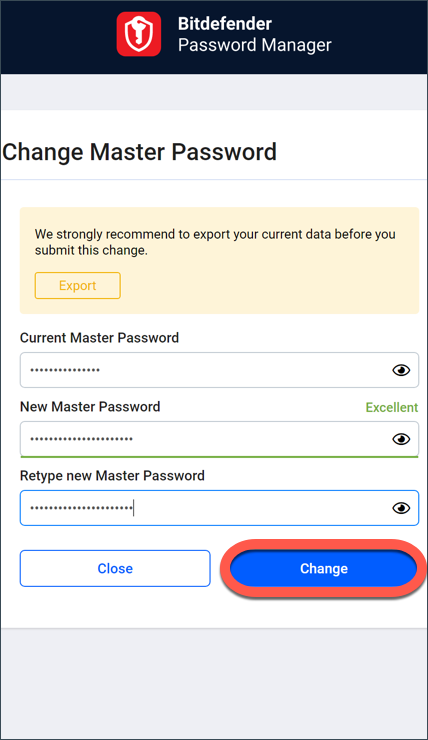

However, you might be able to recover access to your data. This makes sure that your data is safe from intruders, but it also means that no one can reset your password. If you don’t know your account password or it isn’t acceptedįor your security, your account password is:

#Master password reset download
Download your Emergency Kit and write your new 1Password account password.You'll need a different email address to create a new account. Recover your data by copying it to a new account: If you can unlock the 1Password app with your previous password, but you can’t sign in to your account, you’ll still have access to your data locally, but it won’t sync. If you can unlock the app with your previous password If you use multiple languages, make sure you’re using the correct keyboard layout when you enter your password. If your password has accents or special characters, try it with and without them. If your password has spaces, try it with and without spaces. If you have multiple 1Password accounts, try your other account passwords. If you can unlock the 1Password app, but you can’t sign in to your account, copy your data to a new account. If you’ve ever changed your account password, try previous ones. Type your password in another app, like a text editor, so you can see that you’ve entered it correctly.

If Caps Lock is turned on, the password field shows a Caps Lock symbol ⇪. Make sure you’re typing lowercase and uppercase letters correctly. If you believe you know your account password, but it isn’t accepted, try these steps: If you think you remember your account password Otherwise, follow the steps below to try to recover it. If you forgot your password, check your Emergency Kit or ask a family or team member to recover your account. The password you use to sign in to and unlock the 1Password apps is your account password.
#Master password reset code
In source code control systems, it's necessary to apply access controls to the scripts to ensure only authorized sysadmins can access them.If you can sign in to your account on, you can change your password. I've addressed that in the past by treating the certificate-related scripts as protected, the same way I protect TDE keys. Saving passwords in scripts is always a problem. Those certificates remain valid and are not modified in any way simply they are protected with a new master key. Also, changing the master key doesn't decrypt and re-encrypt any TDE-encrypted database, it simply encrypts and re-encrypts certificates that have been encrypted with the key.

You need to be a member of the sysadmin group before you can change the master key. You're really decrypting anything that relies on the key, then dropping the old key and creating an entirely new key, then using that new key to re-encrypt everything that was encrypted previously with the old key. You're actually not modifying the existing master key with ALTER MASTER KEY REGENERATE. However, ensure you understand the ramifications of changing the key, and make sure you backup the new key. This resource-intensive operation should be scheduled during a period of low demand, unless the master key has been compromised. The keys are first decrypted with the old master key, and then encrypted with the new master key. The REGENERATE option re-creates the database master key and all the keys it protects. According to the Microsoft Docs page, syntax is: ALTER MASTER KEY REGENERATE WITH ENCRYPTION BY PASSWORD = 'password'


 0 kommentar(er)
0 kommentar(er)
